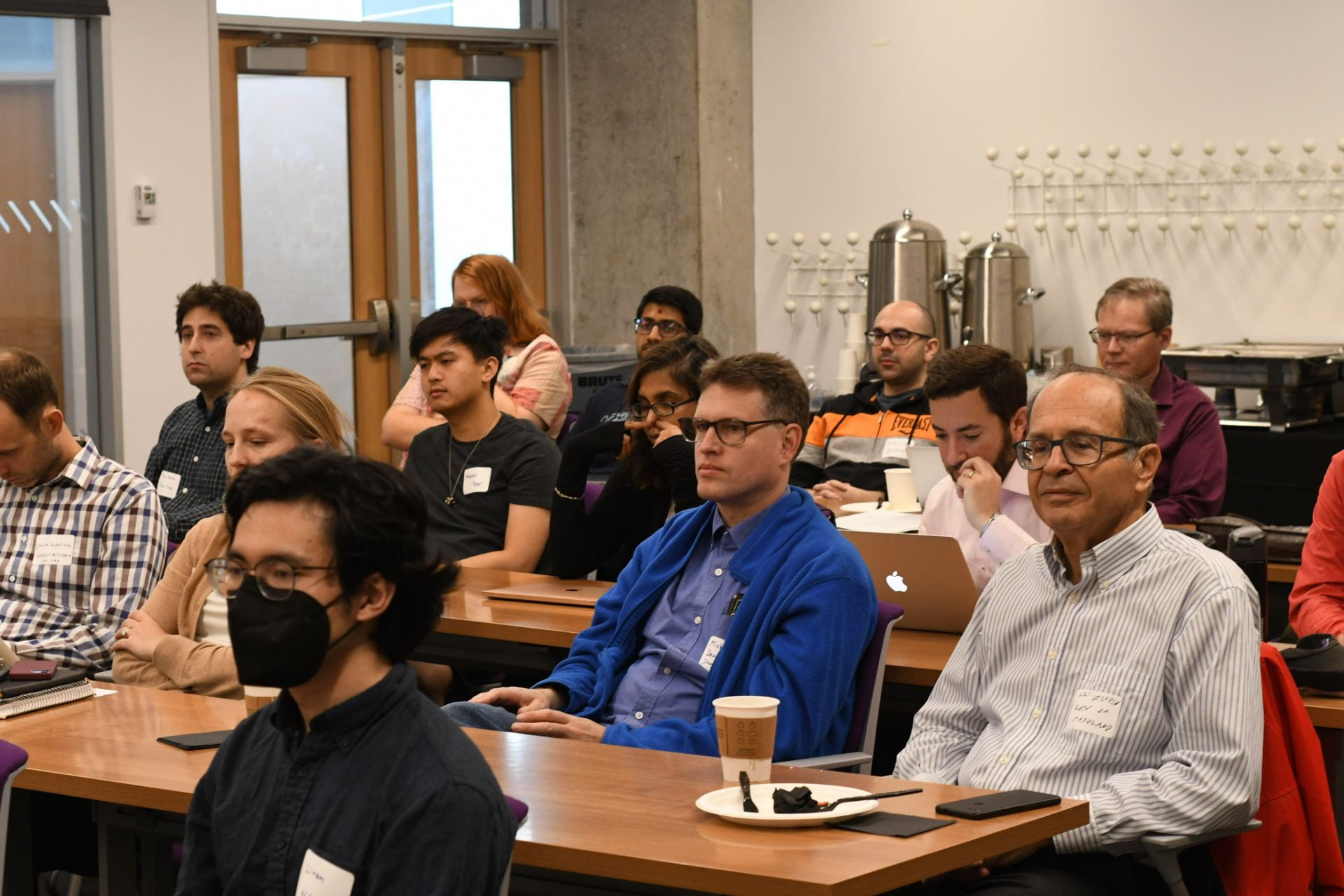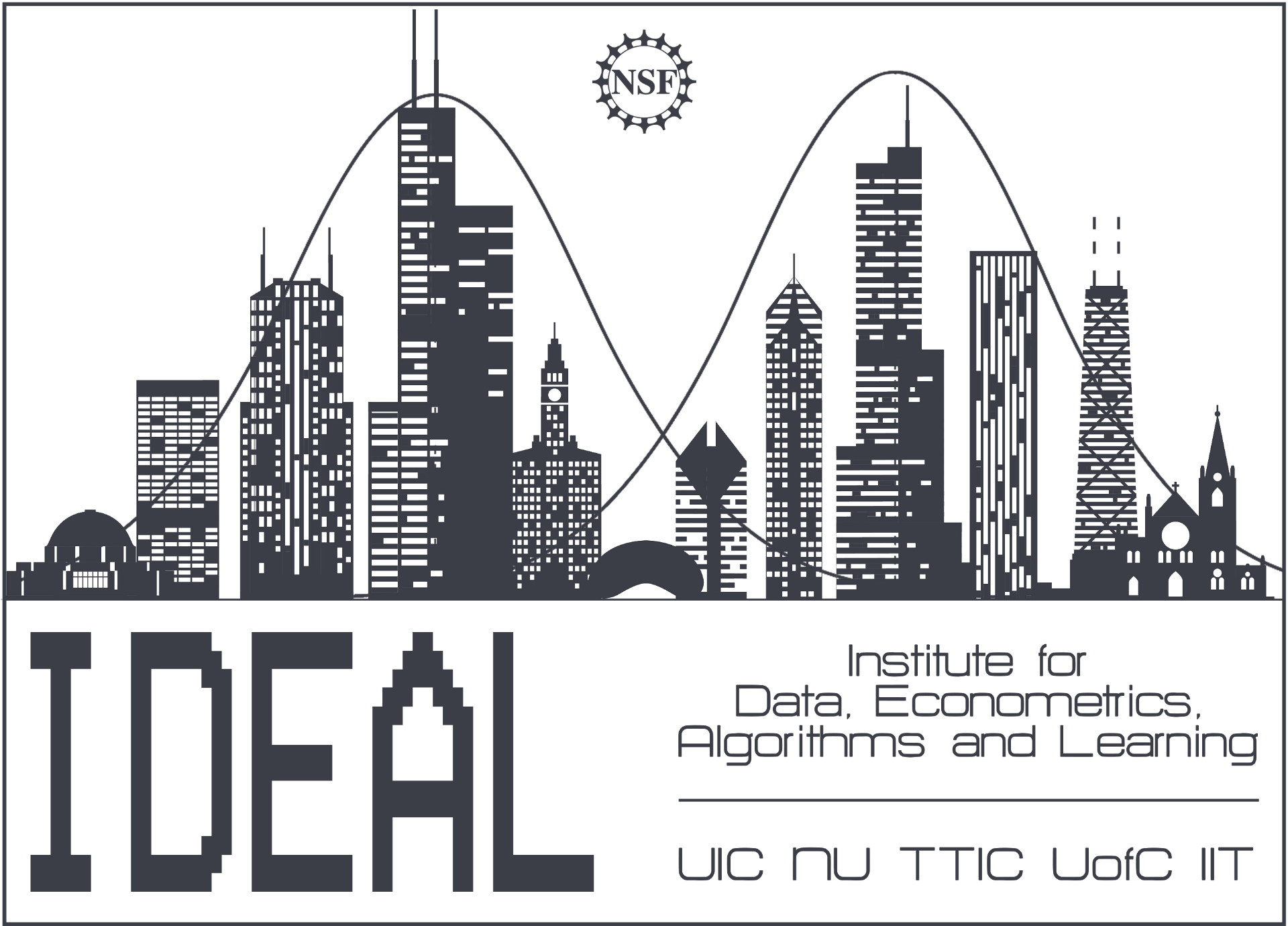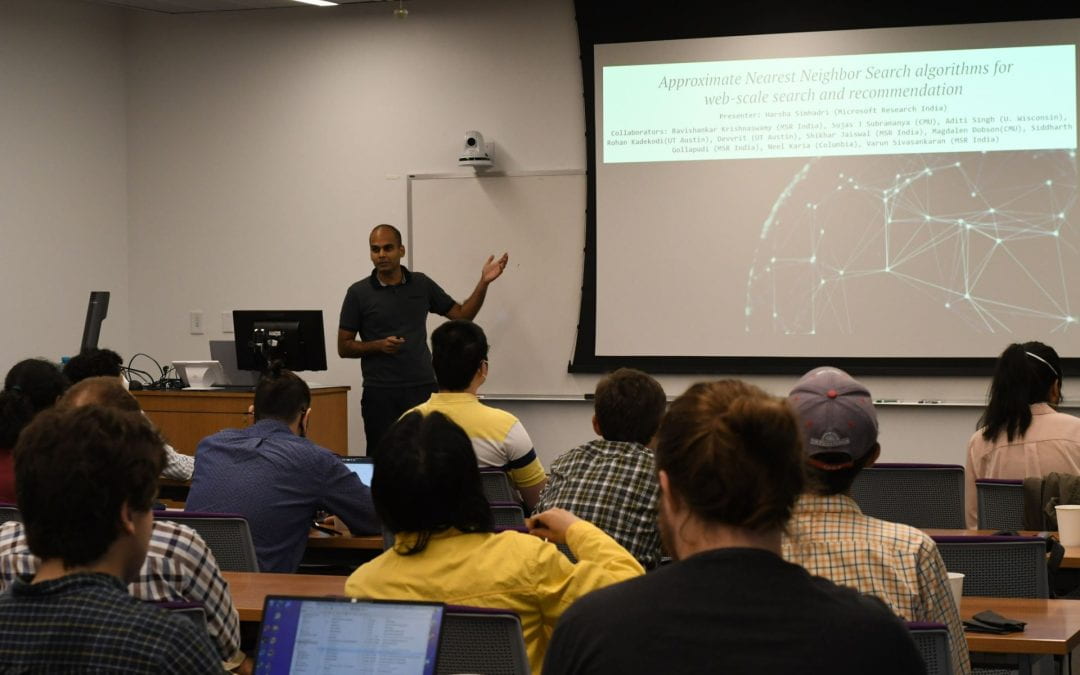Monday, Sept. 12 – Tuesday, Sept. 13
At this “Theory-in-Practice” workshop, we will see many new and exciting advances in the intersection between theory and practice. Topics will include high performance computing, large-scale graph algorithms, and parallel algorithms and data structures. In addition to talks, we will have many opportunities for participants to interact with the speakers and other attendees.
Speakers


About the Series
The IDEAL workshop series brings in experts on topics related to the foundations of data science to present their perspective and research on a common theme. Chicago area researchers with an interest in the foundations of data science.
This workshop is organized by Samir Khuller (NU) and Quanquan Liu (NU).
Logistics
- Dates: Monday, Sept. 12 – Tuesday, Sept. 13
- Location: Northwestern University
- Rooms: Mudd Library 3514
- Registration: Click here to register
- Streaming: via Panopto
*watch the full morning event here
*watch the full after-lunch event here
- 9:30-9:50: Breakfast
- 9:50-10:00: Opening Remarks
- 10:00-10:45: Harsha Simhadri (video)
- 10:45-11:30: Stefan Muller (video)
- 11:30-11:50: Coffee Break
- 11:50-12:35: Kunal Agrawal(video)
- 12:35-2:00: Lunch Break
- 2:00 – 2:45: Jakub Łącki(video)
- 2:45 – 3:30: Uzi Vishkin (video)
- 3:30 – 4:00: Coffee Break
- 4:00-5:30: Individual/group meetings with students, faculty, postdoc attendees
- 5:30pm: Reception
Schedule FOR TUESDAY, SEPT. 13
Titles and Abstracts
We will conclude with some open problems in this space — e.g., support for hybrid queries that involve a combination of similarity search and hard matches such as language or author — and some preliminary results. Further, proving any reasonable bounds on the complexity of DiskANN or related graph-based ANNS indices remains an open problem.
Joint work with Ravishankar Krishnaswamy, Sujas J Subramanya, Aditi Singh, Rohan Kadekodi, Devvrit, Shikhar Jaiswal, Magdalen Dobson, Siddharth Gollapudi, Neel Karia, Varun Sivasankaran.
Bio: Harsha Simhadri is a Principal Researcher at Microsoft Research. He enjoys developing new algorithms with a view towards future platforms and practical systems. Recent examples include algorithms for web-scale nearest-neighbor search deployed in various Microsoft search and recommendation scenarios, and new ML operators and architectures for tiny IoT and edge devices. He previously worked on parallel algorithms and run-times with provable guarantees for multi-core processors for his PhD thesis at Carnegie Mellon University.
In this talk, I will introduce graph types, which compactly represent all of the graphs that could arise from program execution. Graph types are inferred from a parallel program using a graph type system and inference algorithm. I will describe how graph types are computed from a program, and how they can be used to visualize and give programmers feedback about the parallel structure of a program.
This talk is based on work originally presented at POPL 2022.
Bio: Kunal Agrawal is a professor of Computer Science and Engineering at Washington University in St. Louis. She is interested in problems that arise at the intersection of theory and practice generally, and more specifically in parallel algorithms and data structures, scheduling, caching and paging, and real-time systems.
I long believed that: (i) for general parallel computing to become ubiquitous, algorithm and hardware design communities need to pull together their respective strengths, and (ii) parallel algorithms and programming need to provide an extensive benchmark suite of codes that meet two main requirements:
- The benchmark should reflect scalable algorithm design framework that will attract massive participation of programmers, once the framework is supported by commodity manycore CPUs.
- The framework should be supportable by cost-effective hardware, including constant factors.
The second requirement clearly exceeds the comfort zone of most algorithm designers. Still, the most important objective for research in general and parallel algorithms in particular is to maximize its impact. Therefore, I decided to bite the bullet and the hardware and software prototyping done at UMD for demonstrating feasibility of a PRAM-based approach, known as XMT provides one such framework.
Maximizing impact remains the order of the day. IMO, parallel algorithms researchers should either develop benchmark code suites for XMT itself, or for future alternative frameworks that share critical features with XMT. If enough parallel algorithms researchers jointly (contribute and) assert importance of such a benchmark, vendors and hardware designers would listen and be inspired to innovate towards producing industry grade processors.
Bio: Uzi Vishkin has been Professor of Electrical and Computer Engineering and permanent member of the University of Maryland Institute for Advanced Computer Studies (UMIACS) since 1988.
Inspired by the possibility that transition to parallelism may turn into the only paradigm shift in core computing during his professional lifetime, he started his work on parallel computing in 1979 as a doctoral student. His initial focus was on parallel algorithms and parallel algorithmic thinking. The 1982 Shiloach-Vishkin work-depth methodology for presenting parallel algorithms provided the presentation framework in several parallel PRAM algorithms texts that also include a considerable number of symmetry breaking techniques, and parallel graph and string matching as well as other algorithms he co-authored. His integer sorting algorithms evolved into the map reduce paradigm. He is an ACM Fellow for, among other things, having “played a leading role in forming and shaping what thinking in parallel has come to mean in the fundamental theory of Computer Science”. He was also an ISI-Thompson Highly Cited Researcher.
This parallel algorithms theory provided the basis for his invention of the PRAM-On-Chip desktop supercomputer framework that scales to 1000 processors on chip, and beyond. He has led extensive hardware and software prototyping of this framework, refuting “common wisdom” that this cannot be done. Prototypes include a 64-processor computer that has already been programmed by nearly 1000 students in a single high-school.
Bio: Laxman Dhulipala is an Assistant Professor in the Department of Computer Science at the University of Maryland, College Park. He is also a visiting faculty researcher at Google Research where he works on the Graph Mining team. Previously, he was a postdoc at MIT working with Julian Shun. He obtained his Ph.D. from Carnegie Mellon University, where he was advised by Guy Blelloch. His current research interests are on parallel clustering (graphs and spatial data), and efficient parallel algorithms for static, streaming, and dynamic graphs.
Bio: Jeremy Fineman is an Associate Professor and Wagner Term Chair of Computer Science at Georgetown University. His main research interest is in algorithm design and analysis, with a focus on data structures, parallel algorithms, memory-efficient algorithms, and scheduling. He received his Ph.D. from MIT in 2009 and did a postdoc at CMU before starting at Georgetown in 2011.
Join Our Newsletter


